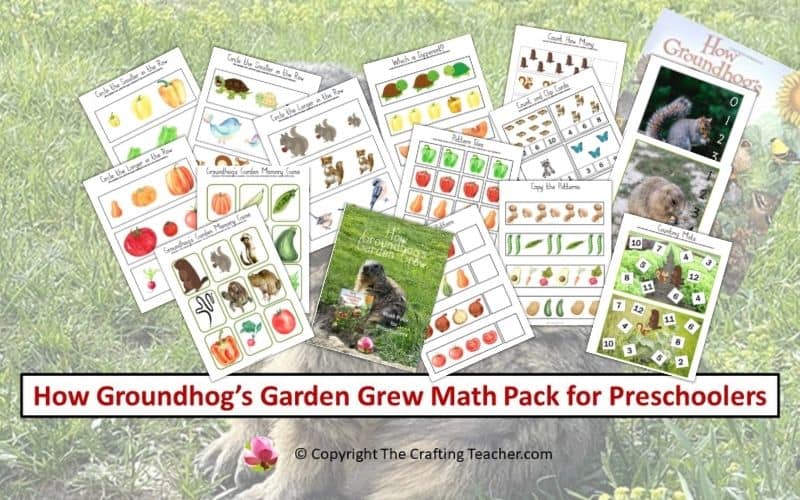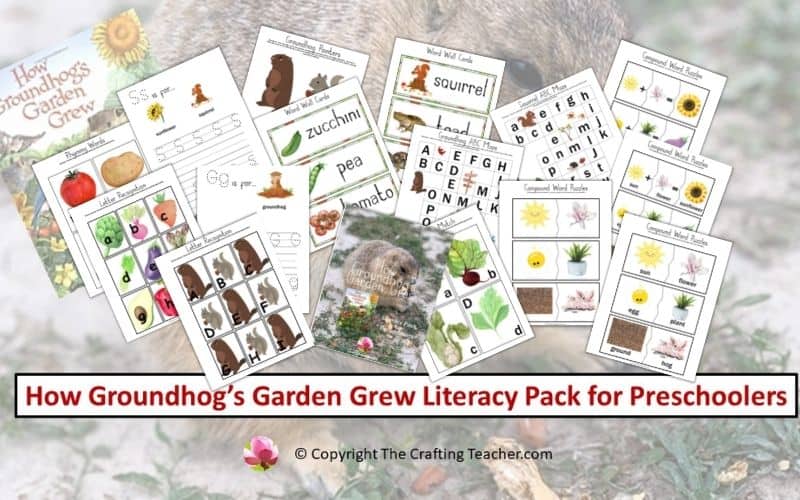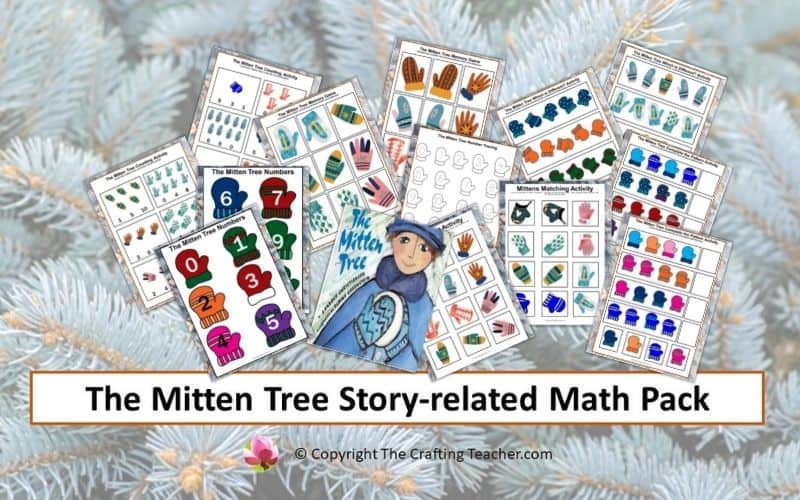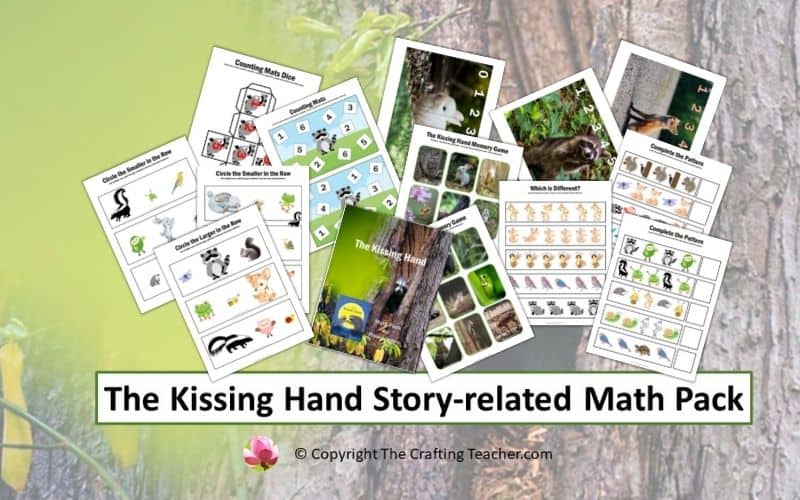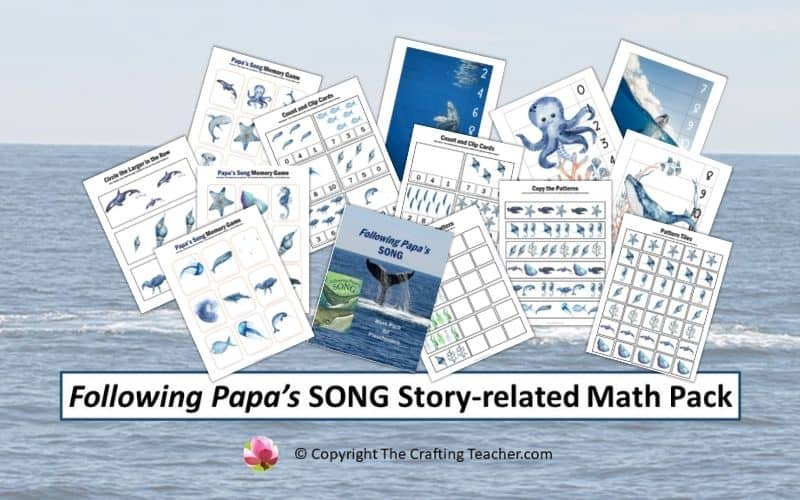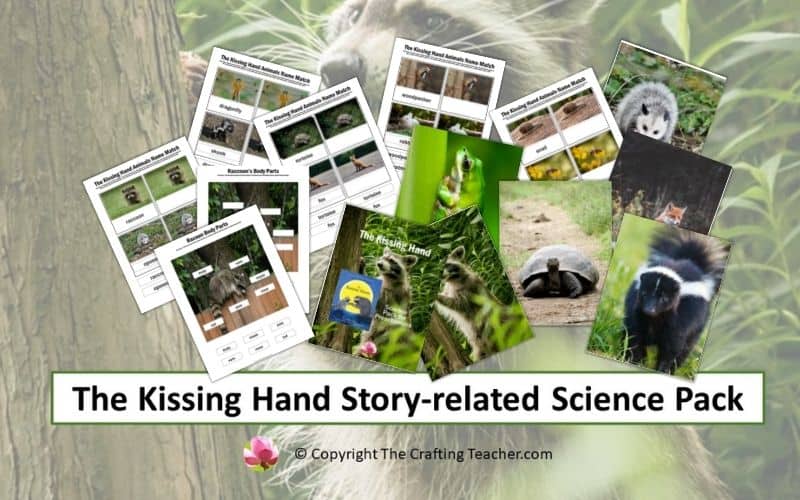How Groundhog’s Garden Grew Story-related Math Pack for Preschoolers
Affiliate Disclosure: “This post contains affiliate links, which means I receive a small commission, at no extra cost to you, if you make a purchase using those links.”
How the Groundhog’s Garden Grew by Lynne Cherri is a beautiful story that talks about how a Squirrel shows Groundhog how to plant, using beautiful illustrations. It is also one of my favorites. This book not only introduces children to different editable plants, fruits and vegetables, animals, and how plants grow but also allows you to create a complete math lesson with it.
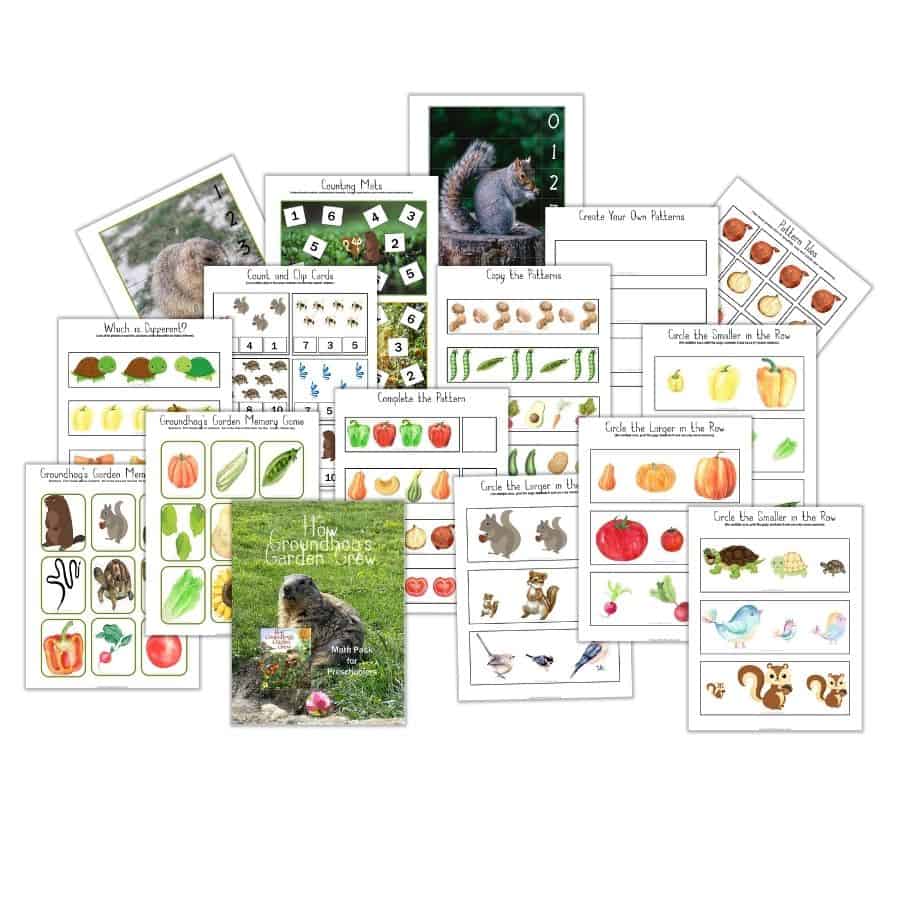
With this in mind, I created a FREE How Groundhog’s Garden Grew Math Pack which is 33 pages long and includes nine different activity sets to go with the story, which you can download at the end of this post.
Importance of Teaching Math to Preschoolers
Math is everywhere. The world is full of different patterns, shapes, sizes, and amounts that children begin to explore when they are one year old. Math helps them make sense of the world around them and solve problems, even when they are playing.
Preschool teachers and parents must provide opportunities for children to do meaningful, fun, and positive mathematical activities to set up the foundation for their future because learning Math helps children develop important skills such as:
- Creative and critical thinking skills.
- Problem-solving.
- Communication.
- Understanding of patterns, sizes, and shapes.
- Ability to understand the world around them.
How Groundhog’s Garden Grew Math Activities
There are many math activities you can do using this storybook. Below are just some ideas that you can use with your preschoolers in your classroom or at home, for fun and educational math activities related to this beautiful story.
How Groundhog’s Garden Grew Memory Game
This game is great to strengthen the children’s concentration, and memory and to work on one-to-one correspondence and creating sets.
The How Groundhog’s Garden Grew Math Pack includes two sheets with nine cards each, with some of the animals and veggies in the story. Print each page twice, for each set of the game, using white cardstock. Cut out and laminate the cards to make them last longer.
This game can be played as an individual activity or with a partner. Keep it super simple and have the children place the cards face down. Each child has to select a card randomly and try to match the selected card with its double. The child that matches the most cards wins the game.
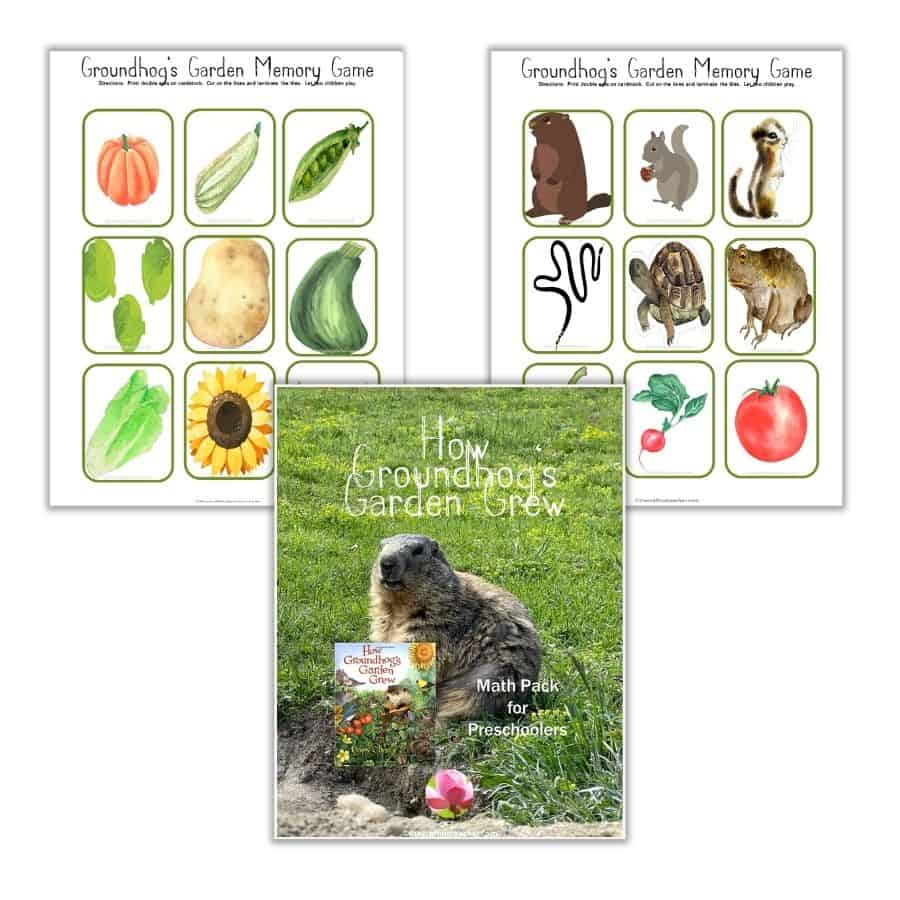
Visual Discrimination Activities
Preschoolers must develop their visual discrimination to be able to identify and recognize similarities and differences not only in sizes, but also in shapes, letters, numbers, colors, and positions. It is an essential skill that will allow doing important activities in life from knowing how much water a container can hold to big of space they need to park a car.
The How Groundhog’s Garden Grew Math Pack contains two size discrimination activities, one to circle the larger in the row, and the other one the smaller. Both activities come with two sheets with 3 strips each, featuring different animals and veggies from the story. You can either keep the sheets together or divide the strips. If you want to reuse the activity, just print the sheets in white cardstock and laminate them or use a dry-erase pocket to protect them.
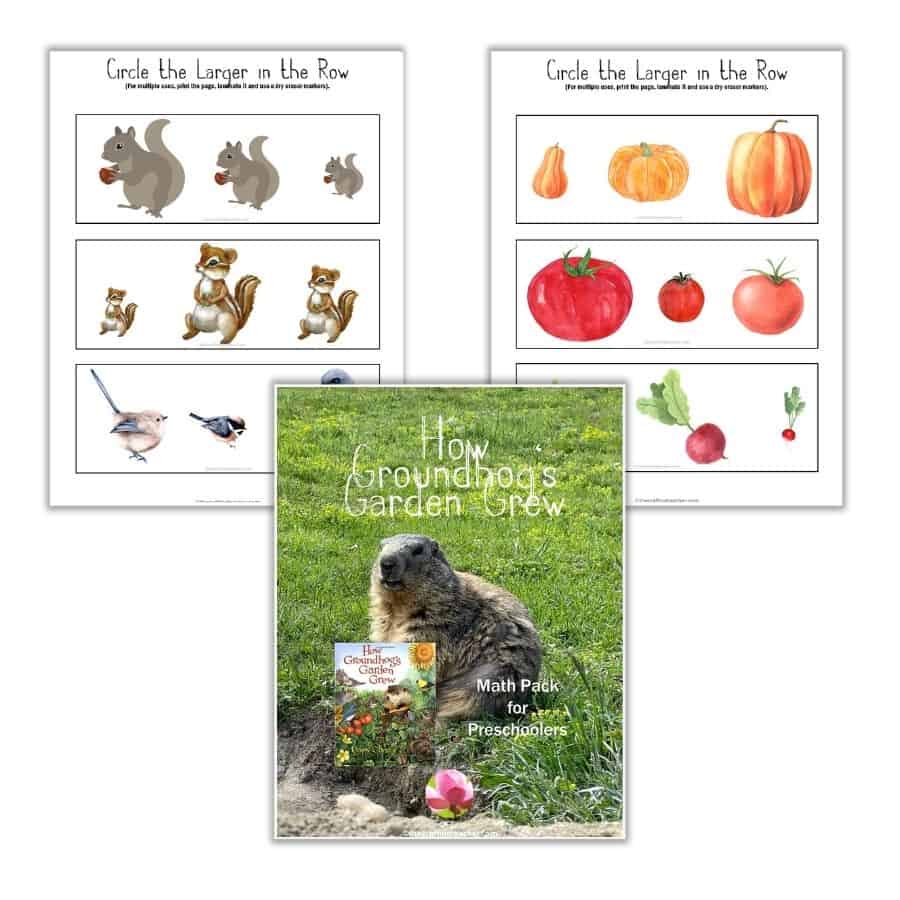
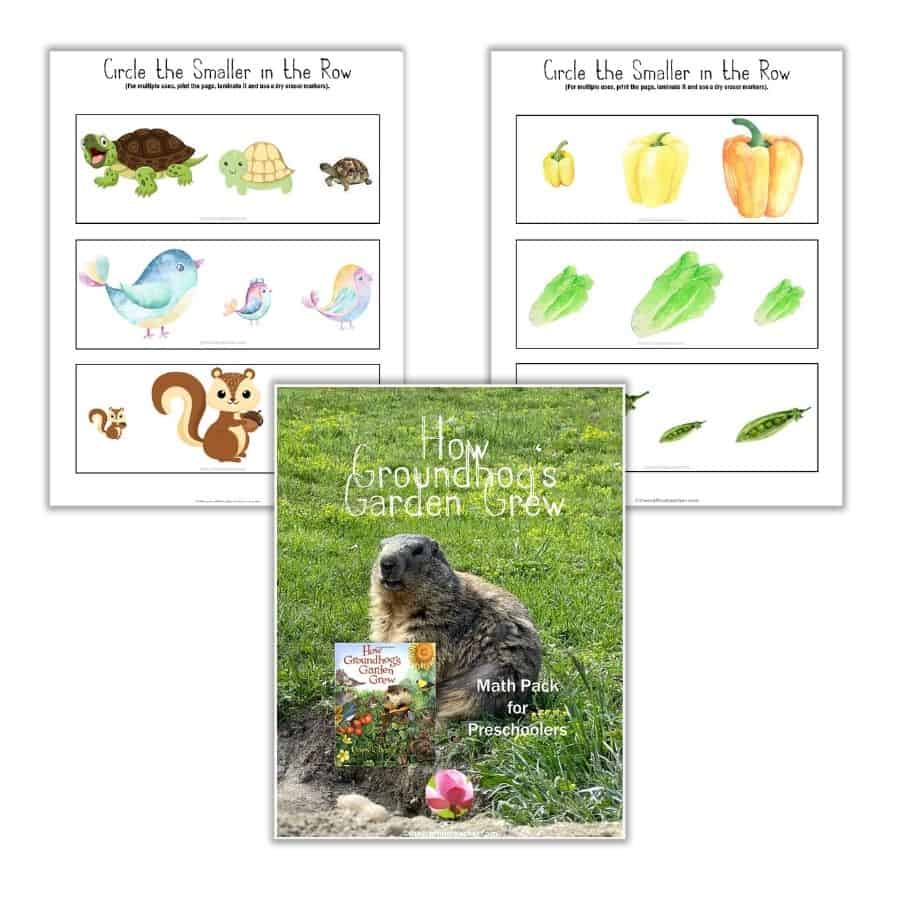
Pattern Activities
Patterns can be found everywhere, and children must learn to identify them, to be able to make predictions and understand what comes next, make logical connections, and develop their reasoning skills. Pattern activities also help preschoolers develop their visual discrimination and fine motor skills.
I included three different pattern activities in the How Groundhog’s Garden Grew Math Pack. One to complete the pattern, another one to copy the pattern both with two sheets of four strips of different pattern combinations each, and the last one to create their pattern. I also included four sheets of tiles with 20 different designs, to use with these activities.
If you want to reuse these activities you only have to print them out in white cardstock and laminate them or protect them with a dry–erase pocket. After you introduce the activities, keep them available to encourage your preschoolers to continue working on them.
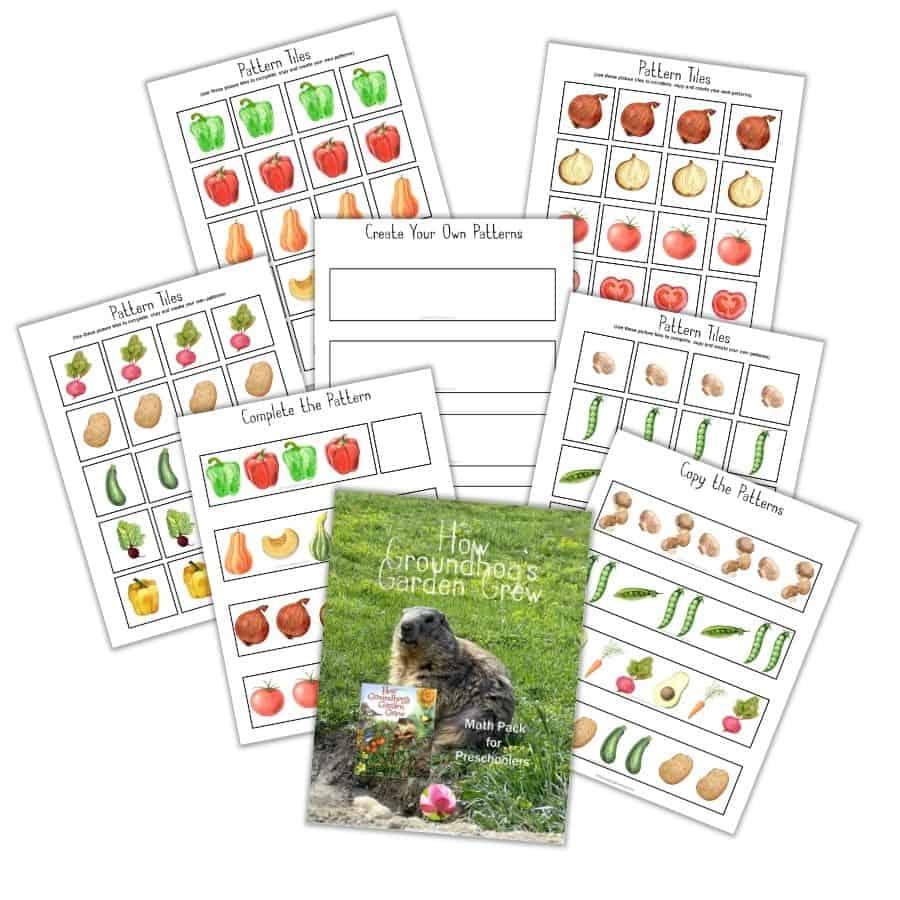
Recognizing Which is Different
Another way to help children practice their visual discrimination is presenting objects in a row, some exactly alike and one different, for them to identify it. The How Groundhog’s Garden Grew Math Pack comes with two sheets with four strips each, for a total of eight different strips, for this activity. You can either keep the sheets together or divide the strips.
Like the previous activities, if you want to reuse this one multiple times just print the sheets in white cardstock and laminate them or use a dry-erase pocket to protect them. Then have children use a dry-erase marker to draw a circle around the different pictures, instead of a pencil, crayon, or marker.
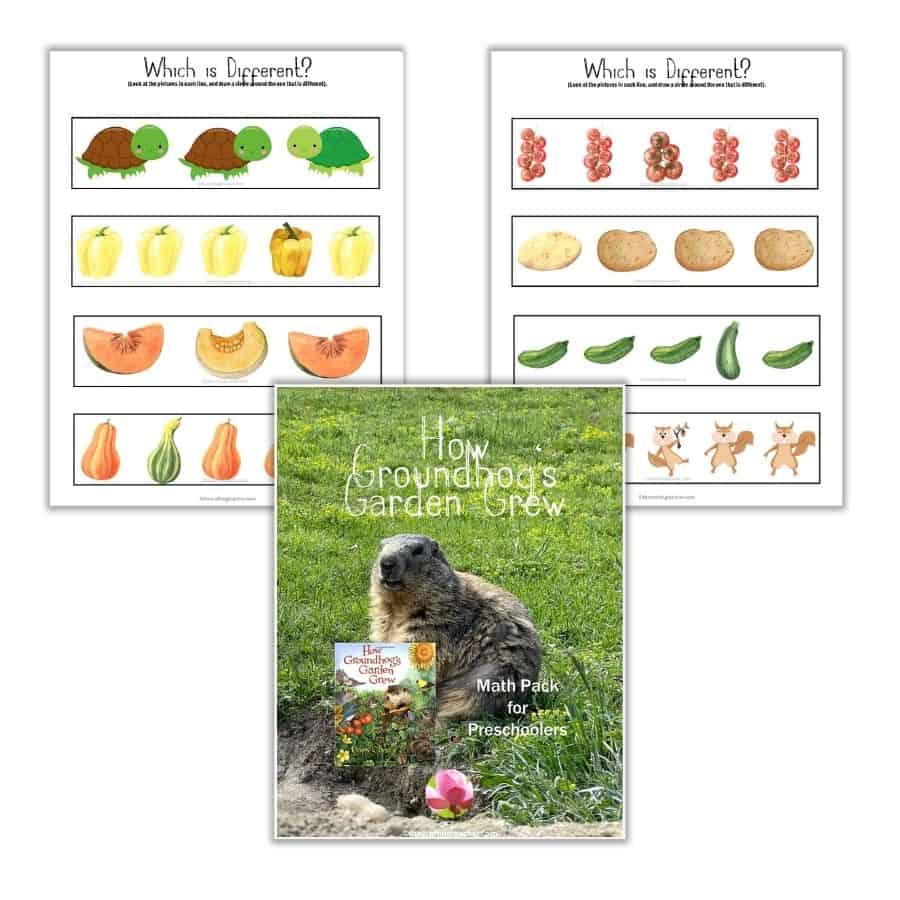
Counting Activities
Counting is an essential skill that preschoolers need to learn because it helps them understand the meaning of numbers, and is the base for all the other number concepts. That is why we must give preschoolers plenty of opportunities to do hands-on counting and number-related activities.
The How Groundhog’s Garden Grew Math Pack includes three types of counting activities. These activities are great to help preschoolers work on their one-to-one correspondence, number recognition, counting, hand-eye coordination, fine motor and adding skills.
Count and Clip Cards
Children have to count the objects on each card and place a clothespin over the correct numbers. To prepare it, just print the sheets in white cardstock, cut them out, and laminate them for durability.
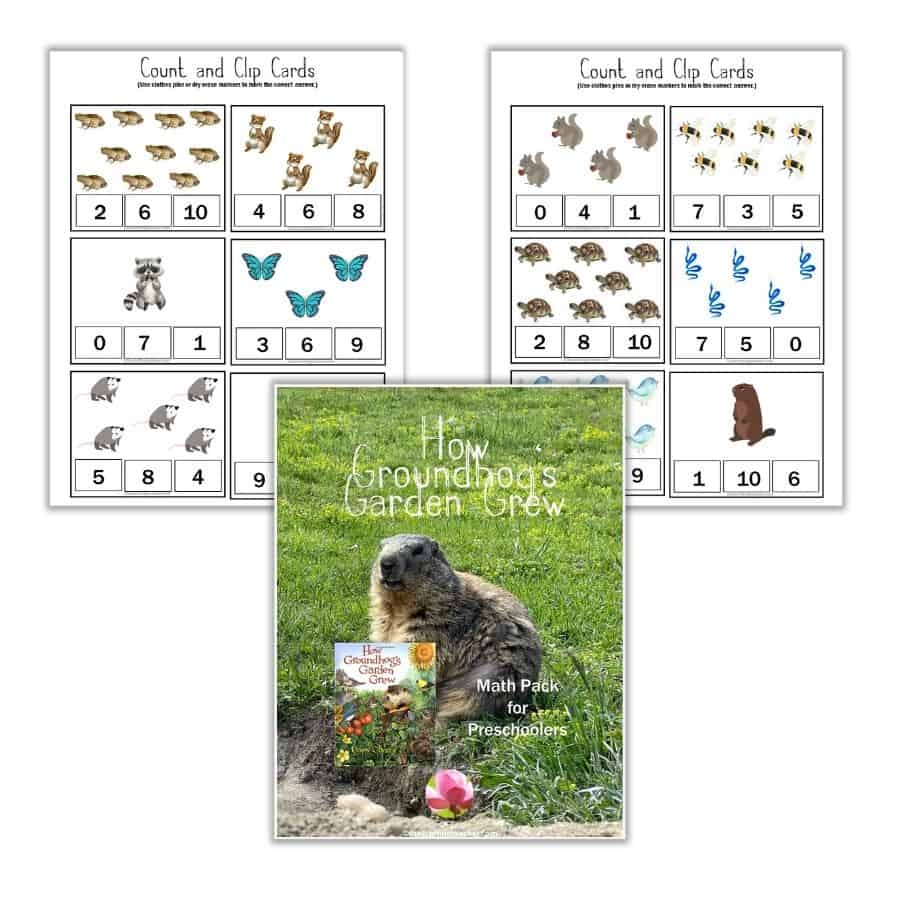
Count How Many Activities
I’ve included two sheets with two different yet similar activities each in the How Groundhog’s Garden Grew Math Pack. In the first one children have to count the objects, circle the correct number, and write that number in the line, using a crayon, marker, or pencil.
The second one is simpler. Children just have to count and write the number in the square.
If you want to use these activities multiple times instead of just once, print the sheets in white cardstock, laminate them or place them in a dry–erase pocket, and have the children use a dry–erase marker to complete the activities.
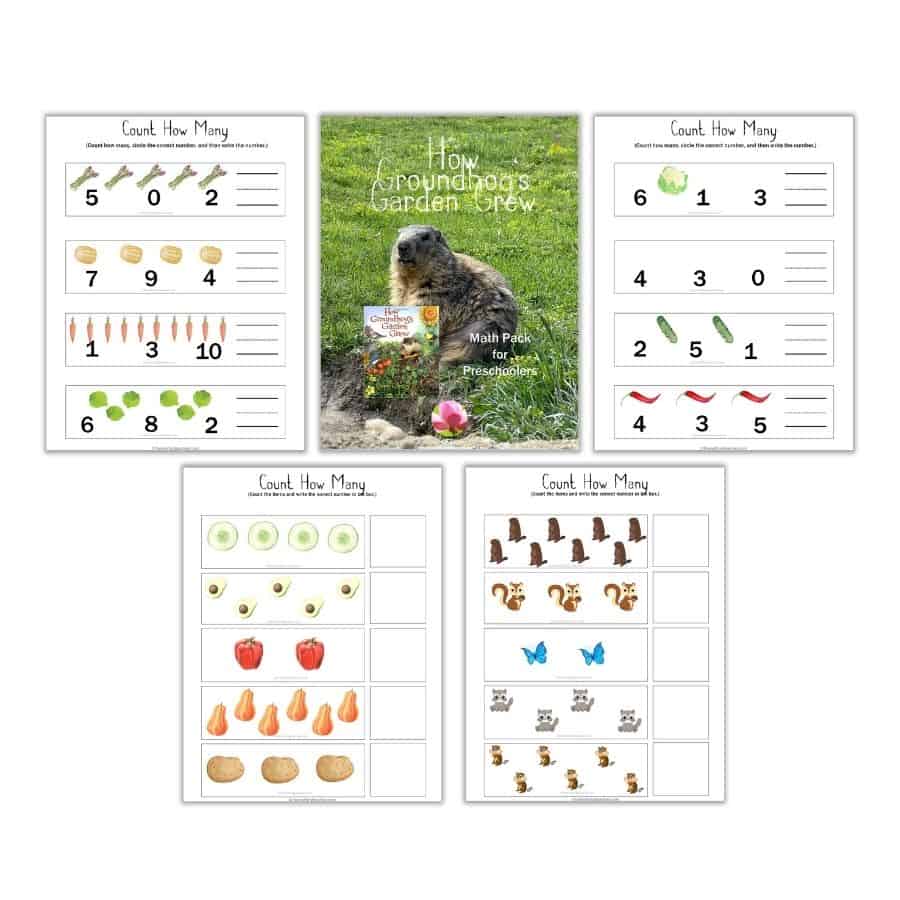
Counting Mats Game
You will find 2 sheets of 2 different sets of counting mats each and 2 different dice, one with dots and one with numbers in the How Groundhog’s Garden Grew Math Pack. If you want to reuse the activity, just print the sheets out in white cardstock, cut out the mats and dice, and laminate them for durability.
You can have one or two students playing this game. To play each child has to roll one or two dice, identify the number, and find the same number in his/her mat to cover, using bingo chips, mini erasers, buttons, pom poms, mini veggies, and animals or other small manipulatives. If the number is already covered, the child loses the turn, and the other child rolls the dice. The winner is the child who covers all his/her numbers first.
Since you probably have preschoolers at different levels of development, you can use one of the dice or two of each, depending on how challenging you want to make the activity for a particular preschooler. Of course, you can also use real dice instead.
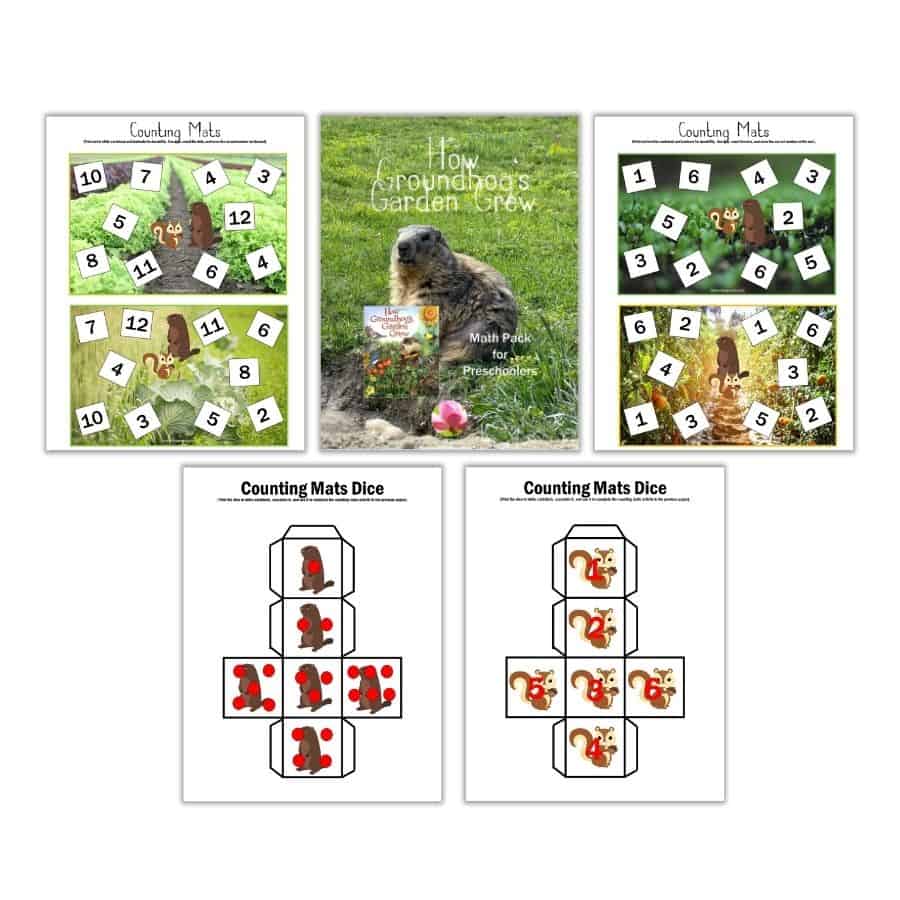
Number Puzzles
The How Groundhog’s Garden Grew Math Pack contains five sheets of puzzles with real pictures and different number combinations. To get them ready, just print all the pages on white cardstock, cut out the strips, and laminate them for durability.
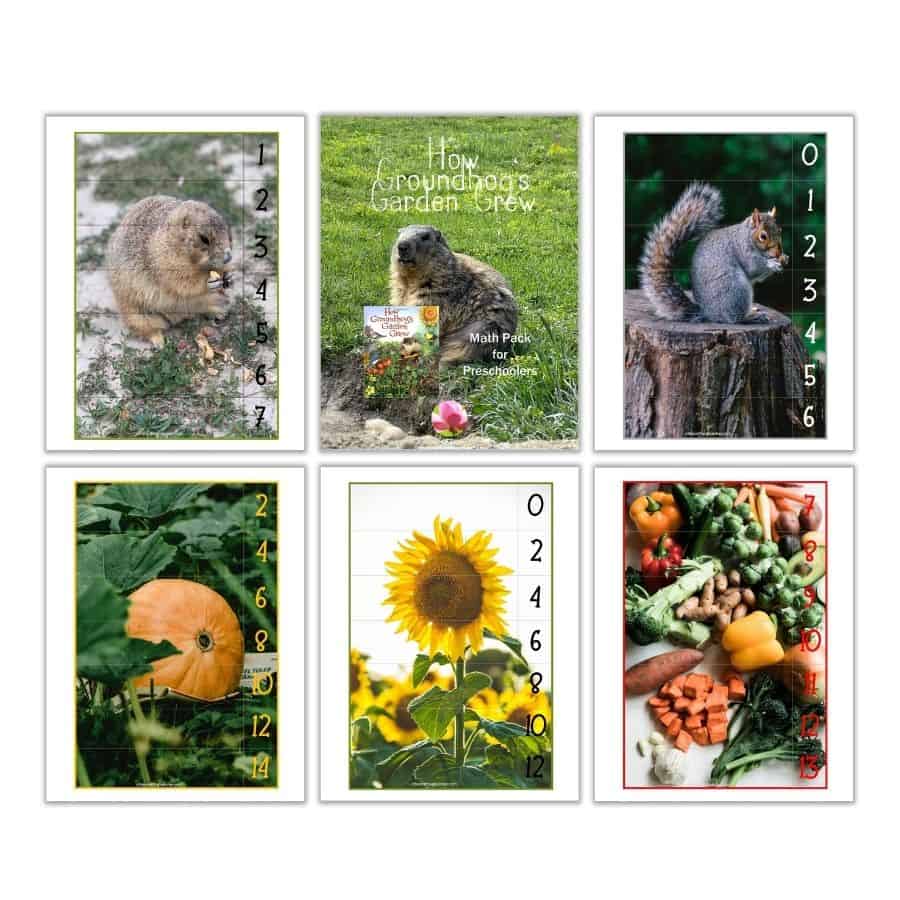
You can use these ideas by themselves, but I will invite you to combine them with the literacy and science activities I created for this beautiful story, How the Groundhog’s Garden Grew, to take advantage of the opportunity this book offers. Remember that for a more comprehensive and complete educational process, you should not divorce literacy from math, science, or any other domain. They intermingle together and complement each other.
Spruce Your Library with Other Books
Remember that there is no such thing as too much reading or too many books. Include different books in your library or book baskets related to the theme or season you are using at the moment, to give children wide learning experiences and variety to choose from.
These are some suggestions of books you can include, which can be found at your local library, used book store, and on Amazon. If you want to add them to your collection, you can use my affiliate link for immediate access.
- My First Book About Growing Food by Duopress Labs. This book is a beautiful introduction to the benefits of growing food, helping them to develop a connection with the natural world, in a friendly and easy way.
- Gregory’s Shadow by Don Freeman. Gregory is a shy groundhog, and having his friend Shadow close by makes him feel brave. But one day Gregory and Shadow go outside to look for food, and they get separated. Scared and lonely, they search and search for one another.
- How Plants Grow by Dona Herwick Rice. Children will learn about various parts of the plant including seeds, roots, and leaves in this engaging nonfiction title, featuring vivid, clear photos and simple, informational text.
- Groundhog’s Runaway Shadow by David Biedrzycki. Phil and his shadow do everything together. But where Phil is steady, predictable, and a little boring, Shadow is adventurous, freewheeling—even a bit rude. So they don’t get along so well anymore. Fed up, the two have a falling out, and Shadow runs off to see the world.
- Facts About the Groundhog by Lisa Stratton. This educational book presents is packed with facts along with full-color photographs and carefully chosen words to teach children about the Groundhog.
- Up in the Garden and Down in the Earth by Kate Messner. This book talks about leaves and sprouts, growing vegetables, ripening fruit, and the earthworms, snakes, skunks, and other creatures that make a garden their home.
- Seed to Plant by Kristin Baird Rattini. In this lively and educational book, children will learn how plants grow, learning about what plants need to thrive and grow with careful text, and brilliant photographs.
Pin It For Later
If you are in a rush and don’t have time to read the post and download the printable but want to save it for later, pin this to your Math board on Pinterest for later.
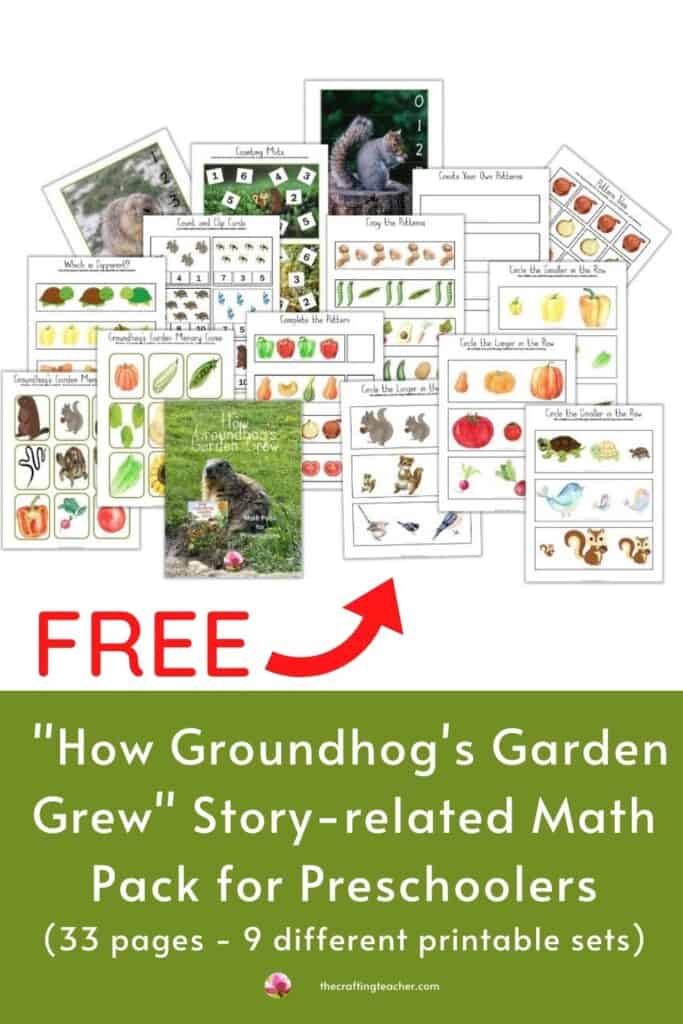
Then check below for other amazing story-related FREE packs, and don’t forget to download your FREE How the Groundhog’s Garden Grew Math pack. You just have to click on the link below and type your email, for an immediate download.
Be happy, safe, and creative. I wish you well.
Love,

P.D. Please let me know if you like any of these ideas worked for you, or if you think I need to add or replace something. My goal is to help you in any way I can and I don’t like anything better than to post something that you might find useful. Also, if you came up with different ideas and want to share them, I would love to post them as well.

